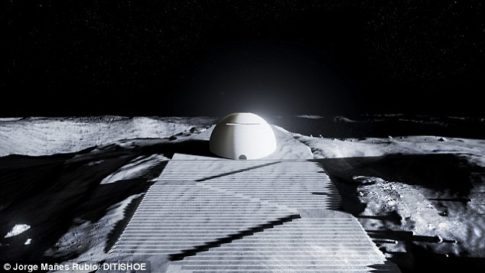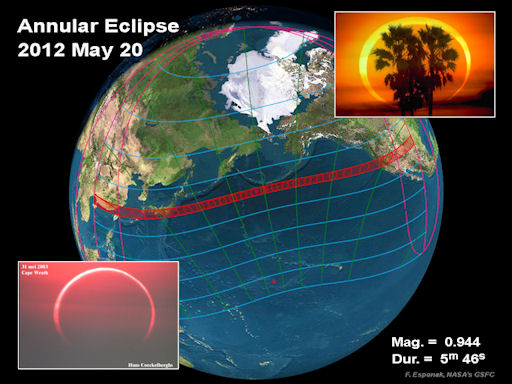So this happened… LOL.
* * *
PayPal: Donate in USD
PayPal: Donate in EUR
PayPal: Donate in GBP
The man who trades freedom for security does not deserve nor will he ever receive either. – Benjamin Franklin

The European Space Agency says the 50m high dome, close to a planned moonbase near to the moon’s south pole, would give the first settlers ‘a place of contemplation’.
– The incredible lunar TEMPLE: European space bosses reveal plan for 50m high ‘dome of contemplation’
- Perpetually sunlit peak close to the Moon’s south pole
- Would be built on the sunlit rim of Shackleton Crater, near proposed lunar base
- 50 m-high domed structure Temple will be ‘symbol of unity for humankind’
‘I’ve been having all sorts of discussions with my ACT colleagues, including speculating on the likely needs of future lunar settlers,’ said Jorge.
‘What kind of social interactions will they share, what cultural activities and rituals will they have, and what sort of art and artefacts will they be producing?
‘Humans have been creating art for at least 30 000 years, so I have no doubt this will continue in space and on the Moon.’
The temple would be built on the sunlit rim of Shackleton Crater, which is bathed much of the time in sunlight while overlooking a 4.2 km-deep interior mired in perpetual shadow.
The lunar poles have previously been identified as promising locations for future settlement because craters kept shaded by the lowness of the Sun in the local sky are thought to serve as ‘cold traps’ to preserve water ice, potentially a vital source of water, air or rocket fuel.
…
…
* * *
PayPal: Donate in USD
PayPal: Donate in EUR
PayPal: Donate in GBP
– Sun, moon and Earth align for stunning supermoon finale to 2016 (PHOTOS):
This year is closing on a lunar high note with the spectacular ‘supermoon’ phenomenon expected to occur an incredible three times before the end of 2016 – the first of which can be seen tonight.October 16 is the first night of the year when there will not only be a full moon in the night sky, but it will also be at its closest point to Earth, making it a ‘supermoon’.
…
PayPal: Donate in USD
PayPal: Donate in EUR
PayPal: Donate in GBP
Source: SpaceWeather.com
TOTAL ECLIPSE OF THE MOON: The Moon is about to pass through the shadow of Earth, producing a colorful lunar eclipse. Sky watchers in the Americas, Australia, Pacific islands and parts of Asia can expect to see the full Moon turn beautiful shades of red and turquoise for nearly an hour on Wednesday morning, Oct. 8th.
On October 8th there will be a total eclipse of the Moon. Got clouds? No problem. The event will be broadcast live on the web by the Coca-Cola Science Center.
DON’T MISS THE LUNAR ECLIPSE: On Wednesday morning, Oct. 8th, there will be a total lunar eclipse. Sky watchers in the Americas, Australia and most of Asia can see the full Moon turn red as it passes through the sunset-colored shadow of Earth: visibility map. The show begins at approximately 9:15 UT (2:15 a.m. PDT) when the Moon makes first contact with the core of Earth’s shadow. Totality, when the Moon is fully shadowed, begins at 10:25 UT (3:25 a.m. PDT) and lasts for nearly an hour. Resources:NASA video, animated eclipse, live webcast.
During the eclipse, the Moon will look like this:
– Russia will begin Moon colonization in 2030 – draft space program (RT, May 9, 2014):
“We are going to the Moon forever,” the Russian Deputy PM said in April, and it was not just empty words. It appears Russia does plan to colonize the Moon by 2030 and the first stage of the ambitious project may start as soon as two years from now.
That is according to a leaked draft document that Izvestia newspaper claims to have obtained. It was prepared by the Russian Academy of Sciences, the Roscosmos federal space agency, Moscow State University and a number of space research institutes.
“Moon is a space object of the future reclamation by Earth civilization, and in XXI century there might be a geopolitical competition for lunar natural resources,” the authors of the draft project state in the opening line.
This is why it is important to focus on creating an arsenal of necessary means in advance, they stress.
“The Moon is not an intermediate point in the race,” Russia’s Deputy PM Dmitry Rogozin who is in charge of space and defence industries said back in April. “This process has the beginning, but has no end. We are going to the moon forever.”
Read moreRussia Will Begin Moon Colonization In 2030 – Draft Space Program
– ??Revealed: How the U.S. planned to blow up the MOON with a nuclear bomb to win Cold War bragging rights over Soviet Union (Daily Mail, Nov 25, 2012):
- Scientists were hoping for giant flash on the moon that would intimidate the Soviet Union
- Aim of mission was to launch the nuke by 1959
- Plan was later scrapped due to possible danger to people on Earth
It may sound like a plot straight out of a science fiction novel, but a U.S. mission to blow up the moon with a nuke was very real in the 1950s.
At the height of the space race, the U.S. considered detonating an atom bomb on the moon as a display of America’s Cold War muscle.
Read moreU.S. Planned To Blow Up The MOON With A Nuclear Bomb
–
 Space legend Neil Armstrong dies (CNN)
Space legend Neil Armstrong dies (CNN)
– Neil Armstrong, first man on the moon, dies (USA TODAY)
– Neil Armstrong, first man on the moon, dies at 82 (CNET)
– Farewell Neil Armstrong, the Ultimate Test Pilot (Wired)
– Neil Armstrong dies: A look at his historic moonwalk (Washington Post)
– Neil Armstrong Dead: Statement from Family (ABC News)
– Neil Armstrong (1930-2012): NASA Remembers an American Icon (Space.com)
Source: SpaceWeather.com
SOLAR ECLIPSE THIS WEEKEND: On Sunday, May 20th, the Moon will pass in front of the Sun, producing an annular solar eclipse visible across the Pacific side of Earth. The path of annularity, where the sun will appear to be a “ring of fire,” stretches from China and Japan to the middle of North America:

Image credits (left to right): Hans Coeckelberghs, Fred Espenak, Dennis Mammana
An animated eclipse map prepared by Larry Koehn of ShadowandSubstance.com shows the best times to look. In the United States, the eclipse begins at 5:30 pm PDT and lasts for two hours. Around 6:30 pm PDT, the afternoon sun will become a luminous ring in places such as Medford, Oregon; Chico, California; Reno, Nevada; St. George, Utah; Albuquerque, New Mexico, and Lubbock, Texas. Outside the narrow center line, the eclipse will be partial. Observers almost everywhere west of the Mississippi will see a crescent-shaped sun as the Moon passes by off-center.
Because this is not a total eclipse, some portion of the sun will always be exposed. To prevent eye damage, use eclipse glasses, a safely-filtered telescope, or a solar projector to observe the eclipse. You can make a handy solar projector by criss-crossing your fingers waffle-style. Rays of light beaming through the gaps will have the same shape as the eclipsed sun. Or look on the ground beneath leafy trees for crescent-shaped sunbeams and rings of light.
Solar eclipse resources:
– Perigee “Super Moon” On May 5-6 (NASA, May 2, 2012):
May 2, 2012: The full Moon has a reputation for trouble. It raises high tides, it makes dogs howl, it wakes you up in the middle of the night with beams of moonlight stealing through drapes. If a moonbeam wakes you up on the night of May 5th, 2012, you might want to get out of bed and take a look. This May’s full Moon is a “super Moon,” as much as 14% bigger and 30% brighter than other full Moons of 2012.
The scientific term for the phenomenon is “perigee moon.” Full Moons vary in size because of the oval shape of the Moon’s orbit. The Moon follows an elliptical path around Earth with one side (“perigee”) about 50,000 km closer than the other (“apogee”). Full Moons that occur on the perigee side of the Moon’s orbit seem extra big and bright.
Such is the case on May 5th at 11:34 pm Eastern Daylight Time1 when the Moon reaches perigee. Only one minute later, the Moon will line up with Earth and the sun to become brilliantly full. The timing is almost perfect.
ScienceCasts: The Super Moon of May 2012
YouTube
Okay, the Moon is 14% bigger than usual, but can you really tell the difference? It’s tricky. There are no rulers floating in the sky to measure lunar diameters. Hanging high overhead with no reference points to provide a sense of scale, one full Moon can seem much like any other.
Read moreThe Perigee ‘Super Moon’ On May 5-6, 2012 (NASA ScienceCast Video)

Researchers at the University of Tennessee, Knoxville, are once again turning what scientists thought they knew about the moon on its head.
Last fall, researchers, including Larry Taylor, a distinguished professor in the Department of Earth and Planetary Sciences, discovered “lunar dew” on the moon’s surface — absorbed “water” in the uppermost layers of lunar soil. This discovery of water debunked beliefs held since the return of the first Apollo rocks that the moon was bone-dry.
Now, scientists, including Taylor and Yang Liu, research assistant professor in the Department of Earth and Planetary Sciences, have discovered that water on the moon is more widespread — on the outside and inside of the moon — with some similarities to water in volcanic systems on Earth.
Read moreScientists discover water on the moon is widespread, similar to Earth’s